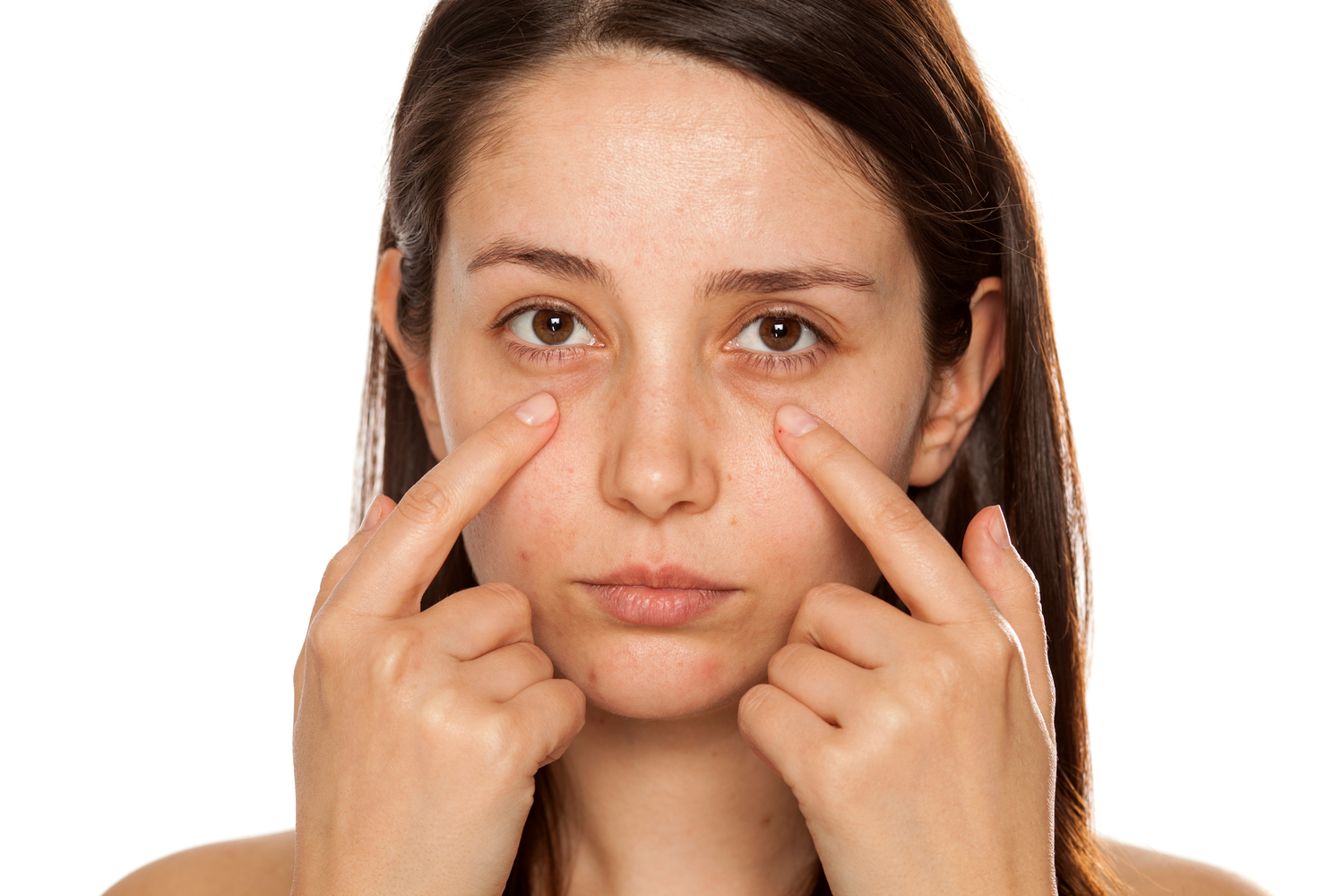How to Remove Dark Circles Under Eyes
People with dark circles under their eyes can appear tired, unhealthy, and older because of their aesthetic impact. The shadowing effect created by deeply set eyes and hollows under the eyes can sometimes give the appearance of dark circles. This may also be an indication of insulin resistance. Discover more about what causes them and how to remove dark circles below!
What are Dark Circles Beneath the Eyes?
Both men and women can have dark circles under their lower eyelids. Dark circles may make you seem older because they are often accompanied by bags on the eyes. In addition, you may not be able to get rid of them as easily as you would like.
Despite the fact that they can affect anyone, dark circles are most frequent among younger or older people.
• This condition is genetically predisposed; periorbital hyperpigmentation.
• Individuals with darker skin tones tend to experience hyperpigmentation around their eyes (dark skin is more prone to this).
The most logical explanation for this condition may be fatigue, but there are many other factors that may contribute to it. They generally do not necessitate medical attention and are not a cause for concern. Here’s what you need to know more about them.
What Causes Dark Circles?
It depends on your genetic predisposition and skin tone whether you develop dark circles. When we age, the skin’s elasticity weakens due to a loss of collagen, and the area under our eyes begins to thin and become translucent. Under-eye darkening can be caused by a variety of factors, such as fluid accumulation under the eyes, increased vascularity in the skin under the eyes, or constitutional hollows. The occurrence of dark circles can be attributed to a variety of factors.
Below are a few of the more common causes:
Fatigue
You may develop dark circles under your eyes if you overslept, were extremely fatigued, or just stayed up a little longer than usual. Your skin may appear dull and pale as a result of sleep deprivation, allowing you to see the dark tissues and blood vessels beneath your skin.
Fluid can also accumulate under your eyes due to lack of sleep, contributing to their puffy appearance. Consequently, you may see dark circles due to shadows cast by puffy eyelids.
Your age
The process of aging can also contribute to dark circles underneath your eyes. The thinner your skin becomes with age, the more visible they become. As you age, you also lose fat and collagen needed to maintain the elasticity of your skin. This causes the area below your eyes to darken as the dark blood vessels beneath your skin begin to show.
Straining of the eyes
The strain on your eyes can be severe when you stare at your television or computer screen for long periods of time. Blood vessels within your eyes may become enlarged as a result. This can lead to darkening of your skin around your eyes.
Allergic reactions
Dark circles can be caused by allergic reactions and eye dryness. As a response to harmful bacteria, your body releases histamines during an allergic reaction. Histamines not only cause uncomfortable symptoms such as itchiness, redness, and puffy eyes, but also cause blood vessels beneath the skin to expand, making them more visible.
In addition, allergies may lead you to scratch and rub the itchy skin around your eyes more often. Your symptoms can worsen as a result of these activities, such as bruising, swelling, and blood vessel damage. It is possible to develop dark circles under your eyes this way too.
Dryness And Dehydration
One of the primary contributors of dark circles under your eyes is dehydration. Symptoms of not receiving enough water include dull skin beneath your eyes and sunken eyes. Your eyes are very close to your bones, so they are affected by lack of water.
Overexposure to the sun
You can produce too much melanin, the pigment that gives your skin its color, when you are exposed to the sun over a long period of time. The pigmentation around your eyes can darken with too much sun exposure.
The Role Of Genetics
Developing dark circles under your eyes can also be influenced by your family history. The condition may be inherited as a child and worsen over time or slowly disappear as you get older. Dark circles under your eyes are sometimes triggered by conditions such as thyroid disease.
What are the Best Ways To Prevent Dark Circles?
You can reduce these dark circles by following the tips below:
• Make sure you eat a balanced diet that is high in iron and avoid excessive caffeine consumption. Make sure you stay hydrated throughout the day by drinking sufficient amount of water.
• Protect your eye area by using gentle techniques. Avoid rubbing or scrubbing the area vigorously.
• Cut back on screen time and get plenty of sleep.
• Put on sunscreen every time you go outside. Wear sunglasses or hats to prevent sun damage to your eyes.
How to Get Rid of Dark Circles Under Your Eye Forever?
You can try these best dark circle treatments:
• Treatment of dark circles with lasers:
In addition to treating superficial and deep pigment around the eyes, laser technology is also used to treat vascularity and edema. To some extent, it helps fade fine lines and wrinkles and even reduces the appearance of dark circles under the eyes. Light energy is used in laser therapy to gently exfoliate the skin and reduce the darkness. By stimulating collagen and remodeling the skin, lasers can also treat skin laxity and reduce dark circles. In regards to treating the eye area, Q-switched Alexandrites, the Ruby laser and the Nd: YAG laser are most effective.
• For dark circles, make use of retinol:
A topical retinoid is one of the strongest ingredients for treating age-related concerns, such as dark circles under the eyes. Although regular use of retinol has been shown to increase collagen production and skin thickness, it can also irritate the skin. But, before you choose a retinol cream to treat dark circles, consult a dermatologist.
• The Effectiveness Of Chemical Peel in treating Dark Circle:
If your under-eye skin is pigmented, a chemical peel can reduce its darkness. Treatment for infraorbital and periorbital dark circles consists of the use of glycolic acid, trichloroacetic acid, and lactic acid at appropriate concentrations. Using over-the-counter peels on your own can be extremely hazardous, so please do not try them yourself. Without proper application, those chemical peels can cause irritation in the delicate eye area.
• Dark Circle Serums and Creams:
Dark circles can be treated with eye creams containing skin lightening ingredients of various strengths. Agents such as hydroquinone, kojic acid, azelaic acid, arbutin, vitamin C, and retinoic acid. These creams help reduce darkly pigmented skin around the eyes. A dermatologist prescribes these in various strengths and combinations to be applied directly to the affected area.
• Under-eye dark circle fillers:
Advanced aesthetic treatments are performed by dermatologists using fillers such as hyaluronic acid to fill hollows and tear troughs under the eyes. This reduces the shadowing effect and eliminates the tired appearance.
• Home Remedies:
You may also ask, “how to reduce dark circles at home”. Well, age-old remedies promise you instant results for removing dark circles. Unfortunately, it is not guaranteed that these will work. Choose a viable and scientifically-proven cosmetic treatment that will improve the texture and tone of the skin around your eyes, reduce dark circles under the eyes, and improve your appearance instead.
Get Rid of Those Dark Circles with the Labelle Clinic
The dark circles under the eyes are often temporary and an indication of aging or lack of sleep for most people. Although there are several at-home and medical treatments available to enhance the appearance of your eyes, dark circles are rarely cause for concern. Should the discoloration or swelling worsen, you should visit a doctor to ensure the issue has been accurately diagnosed and that the right dark circle removal treatment has been administered. Therefore, do not wait any longer and contact the Labelle Clinic right away.

